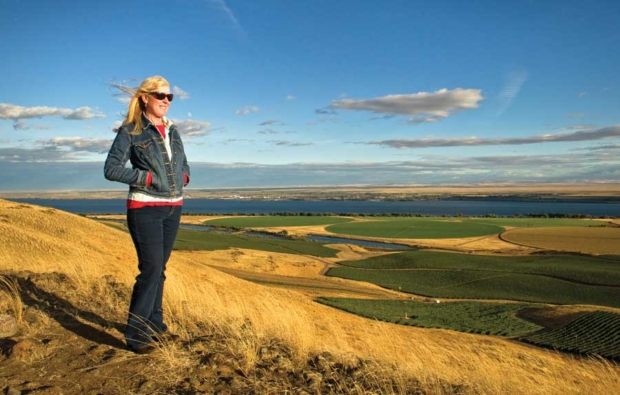
Mimi Nye has managed Ste. Michelle’s Canoe Ridge Vineyard near the Columbia River since it was first planted on the bluffs of southern Washington in the early 1990s. (Courtesy Ste. Michelle’s/Andrea Johnson Photography)
Potatoes were Mimi Nye’s thing in 1990. As the agronomist for Chateau Ste. Michelle’s row crop farm, her goal was to produce the ultimate “Mac fry” potato.
A year later, Ste. Michelle Vice President Jack Kelly tapped her to manage a new wine grape vineyard, Canoe Ridge, on Washington’s steep southern bluffs overlooking the Columbia River.
Nye, then 38, admittedly didn’t know much about grapes, but Kelly said, “Don’t worry, Mimi. You’ll grow with the vineyard.”
Her first boss, Rich Wheeler, told her Canoe Ridge would be a world-class vineyard, and Nye wondered, “How does he know that? That’s a lot of pressure, and how will I know we’re world class?”
Twenty-five years later, Canoe Ridge is renowned for producing premium wines, including three on Wine Spectator’s prestigious “Top 100 Wines of the World” list — three different varieties and in three different vintages. Now Nye is stepping away as the only vineyard manager the site has ever known.
“It’s almost like I was meant to be here, and all the blessings — It’s a beautiful place and people who work here are happy. It’s just such a special place,” Nye told Good Fruit Grower in advance of her April retirement. “But I’m getting too tired. It’s a demanding job.”
Ste. Michelle viticulturist Kari Smasne has been promoted to vineyard manager at Canoe Ridge, and production supervisor Pedro Flores has been promoted to assistant vineyard manager.
Smasne began her career with Ste. Michelle as an intern in 2004, working her way up through viticulture positions.
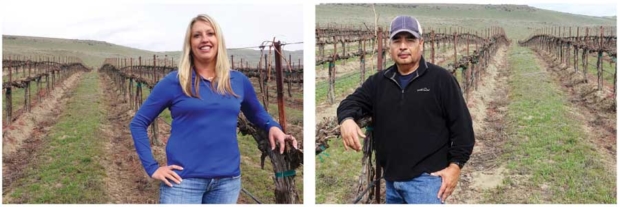
Kari Smasne, Ste. Michelle’s viticulturist, will take over as vineyard manager at Canoe Ridge, and production supervisor Pedro Flores has been promoted to assistant vineyard manager. Both are longtime Chateau Ste. Michelle employees. (Courtesy Ste. Michelle’s)
Most recently, she has supported the winery’s Cold Creek and Col Solare vineyards. Flores, meanwhile, began working with Ste. Michelle in 1987, helping to develop various vineyard sites, and became a team member at Canoe Ridge under Nye in 1991.
Getting started
Canoe Ridge Estate Vineyard sits 10 miles west of Paterson, Washington, on virgin ground close to the river. The south-facing slopes tend to be frost free and heat up quickly for early ripening.
The first year, Nye learned about planting and trellising. The second year, she learned about training up the vines. “And the third year, I learned about harvesting, so when Jack Kelly said I would grow with the vineyard, he was right,” she said.
The vineyard has grown to nearly 600 acres, including a mother block certified clean of viruses and diseases, and 10 varieties of grapes, mostly reds: Cabernet Sauvignon, Cabernet Franc, Malbec, Merlot, Syrah, Grenache, Petite Verdot, Mouvedre, Chardonnay and Viognier. Each of the vines has been one of Nye’s “babies.”
The vineyard is undergoing a renovation in sections; where Chardonnay had been planted on a south slope, Cabernet Sauvignon is replacing it to take advantage of the longer growing season. A Malbec block is being planted on a steep hill high above the winery, and Smasne planted her first four “babies” in that block.
“I’m excited. It’s going to be an adventure, and I’m happy and blessed to come in to such a great situation,” she said. “Everyone is so welcoming and so helpful, not only knowledgeable but helpful and wanting to see the next person succeed. It feels good.”
Smasne has a step up on her, Nye said, because she’s been a viticulturist for 12 years.
“She’s worked with a lot of different growers, bringing a lot of different knowledge and experiences,” she said. “I tell her she’s going to be better than me.”
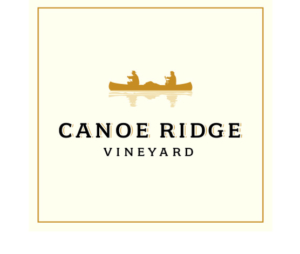
Canoe Ridge label
For her part, Nye helped secure third-party LIVE and Salmon Safe certification for the vineyard in 2009. During her tenure, three wines made Wine Spectator’s Top 100 list — the 2006 Canoe Ridge Estate Cabernet, 2004 Canoe Ridge Estate Chardonnay and 1999 Canoe Ridge Estate Merlot — and she likes to point out that a third of the grapes from a fourth Top 100 wine (2013 “The Pundit” Syrah from Tenet Wines) came from Canoe Ridge as well.
“Canoe Ridge has three and one-third wines on the Top 100, and four different varieties,” she said. “I don’t know if there’s another vineyard in the world that can say that.”
Moving on
Nye’s passion for growing grapes and producing wine was contagious, and she pursued her job with no other agendas despite being one of the stalwarts among early women in the Washington wine industry, said Joy Andersen, winemaker for Ste. Michelle label Snoqualmie Winery.
“She just got the job at hand and did it. It wasn’t about trying to prove herself or be a woman in the workplace,” Andersen said. “She just showed what anybody could do, woman or man, and she managed to do a very, very good job at bringing that vineyard up to world-class status.”
Nye will continue this year as a consultant to Ste. Michelle, helping to guide Smasne through her first season as vineyard manager, pointing out the things to expect in different parts of the vineyard throughout the season. Also helping will be members of the crew, some of whom have been with the vineyard as long as Nye.
Nye recalled a day in the vineyard when she wondered if the crew should quit for the day or tough it out through a rainstorm, worried she might make the wrong decision, until Flores spoke up.
“He said, ‘Don’t worry, Mimi. The people respect you,’” she said. “That was a breakthrough for me. I was unsure of myself, because of the language barrier, and when he told me people respected me, I started to have more confidence that these are my people.”
Nye said she’ll miss the Ste. Michelle family, but the people — and the wine — have made the trip worthwhile.
In February, the Washington Association of Wine Grape Growers honored Nye with the Grower of the Year award, joining the likes of Dick Boushey, Jim Holmes and Paul Champoux.
“I didn’t think I was one of them and now I think, ‘Yeah, I’m one of those people. I belong there,’” she said. “It took me a little while to accept that, but now I realize more people were watching than I realized.”
At the ceremony, Nye recalled reading Proverbs 31 when she was first offered the vineyard manager job. The story is about a woman — a wife, mother and business woman — who uses her profits to plant a vineyard.
“So, 2,800 years ago, a Jewish woman planted a vineyard. I thought, ‘If she can do it, I can do it,’” Nye said. “She’s the ideal woman, and she’s no pushover.”
At 39, Smasne is close to the age Nye was when she started at Canoe Ridge, and both had been working for Ste. Michelle full time for 10 years before taking over the vineyard.
“It’s funny. We have a lot of weird idiosyncrasies. She’s my younger clone, according to my husband,” Nye said. “We are different in a lot of ways. We have different strengths for sure, but we have a lot of similarities too.”
So the legacy of Canoe Ridge continues, with wine that is delicate, nuanced and balanced. “There’s something in this vineyard that is feminine,” she said. “Some things are meant to be.” •
It’s all in the water
So what enables Washington wines to stand out in a crowded marketplace?
The difference is all in the water, said Mimi Nye, longtime vineyard manager at Chateau Ste. Michelle’s Canoe Ridge Estate Vineyard. She retired from that job in April.
Canoe Ridge has gotten acclaim with many varieties, but it’s not just that particular site that stands out, she said.
The Horse Heaven Hills appellation, which includes Canoe Ridge, and Washington state in general benefit from irrigation that other wine regions just don’t have available.
Different varieties require different amounts of water; Chardonnay needs more water to make the kind of wine you want, whereas Cabernet Sauvignon benefits from water stress, she said. Having the ability to manage that water is key to growing premium wines.
“A lot of places where they grow grapes, they grow a few varieties well, but here in Washington, we can grow a lot of varieties well,” she said. “A lot of places in the world will have a great vintage one year and a lousy one the next year. Washington is very consistent year after year, largely because of irrigation.”
Some places, such as France, historically barred irrigation, letting Mother Nature play her part, Nye said, “which is very romantic and all, but it’s not necessarily good for the wine.”
Washington, conversely, can adapt to changes of the seasons and apply water accordingly, she said, and that’s key to growing so many different varieties and consistently producing premium wine.
– by Shannon Dininny


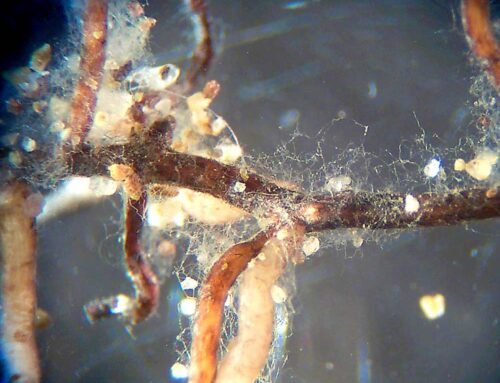
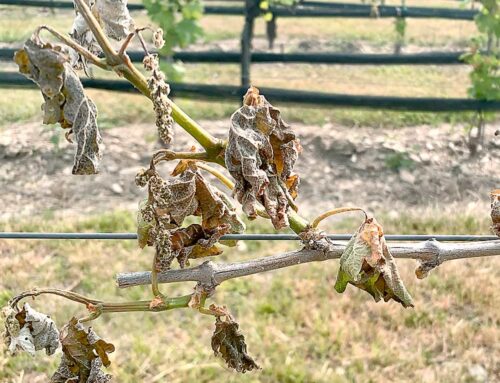
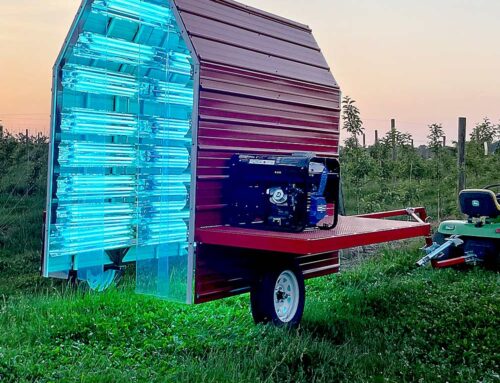
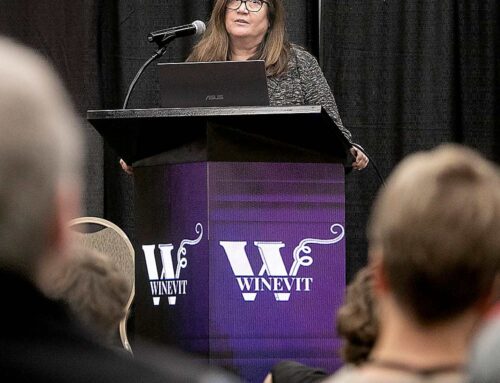
Leave A Comment